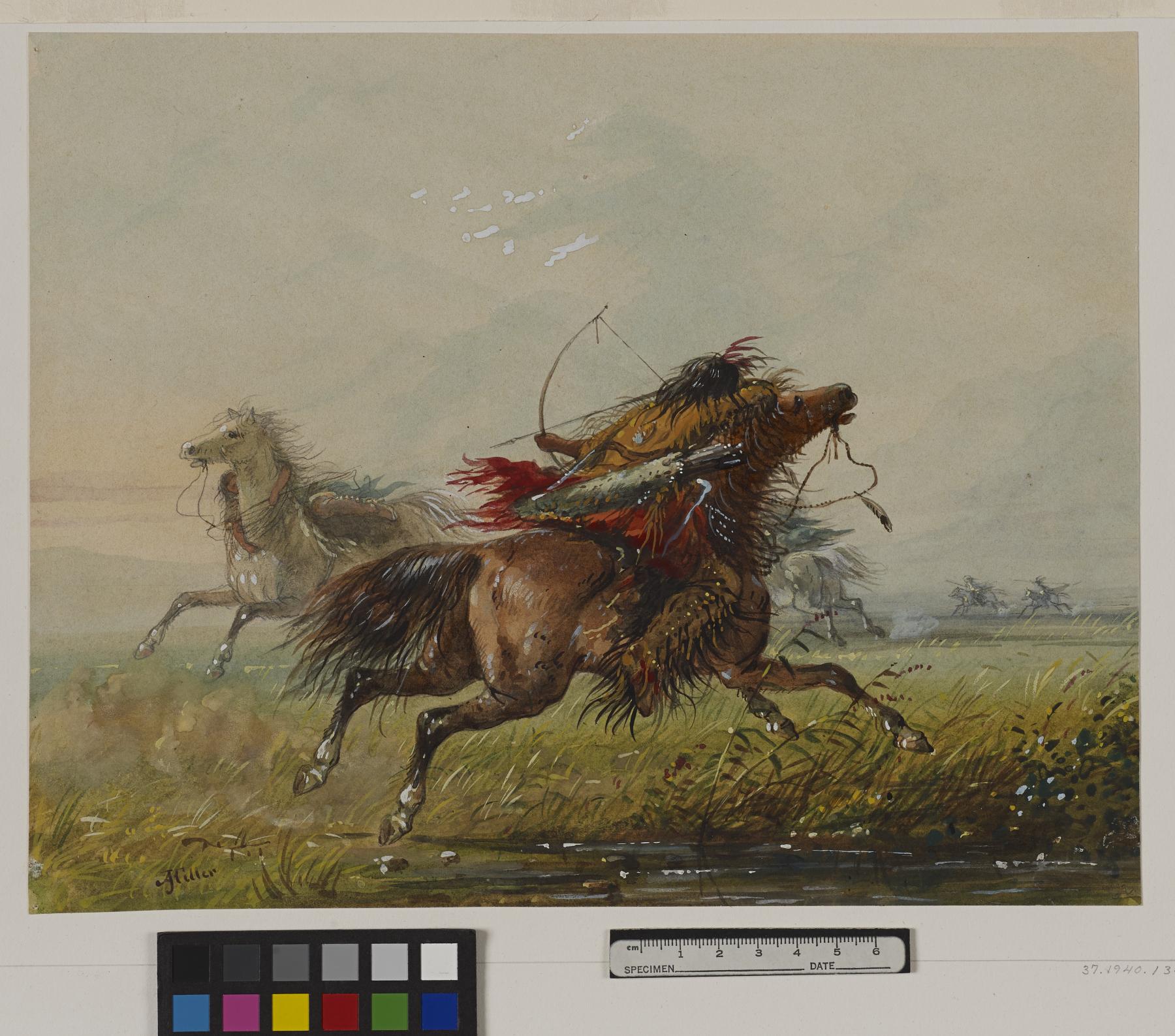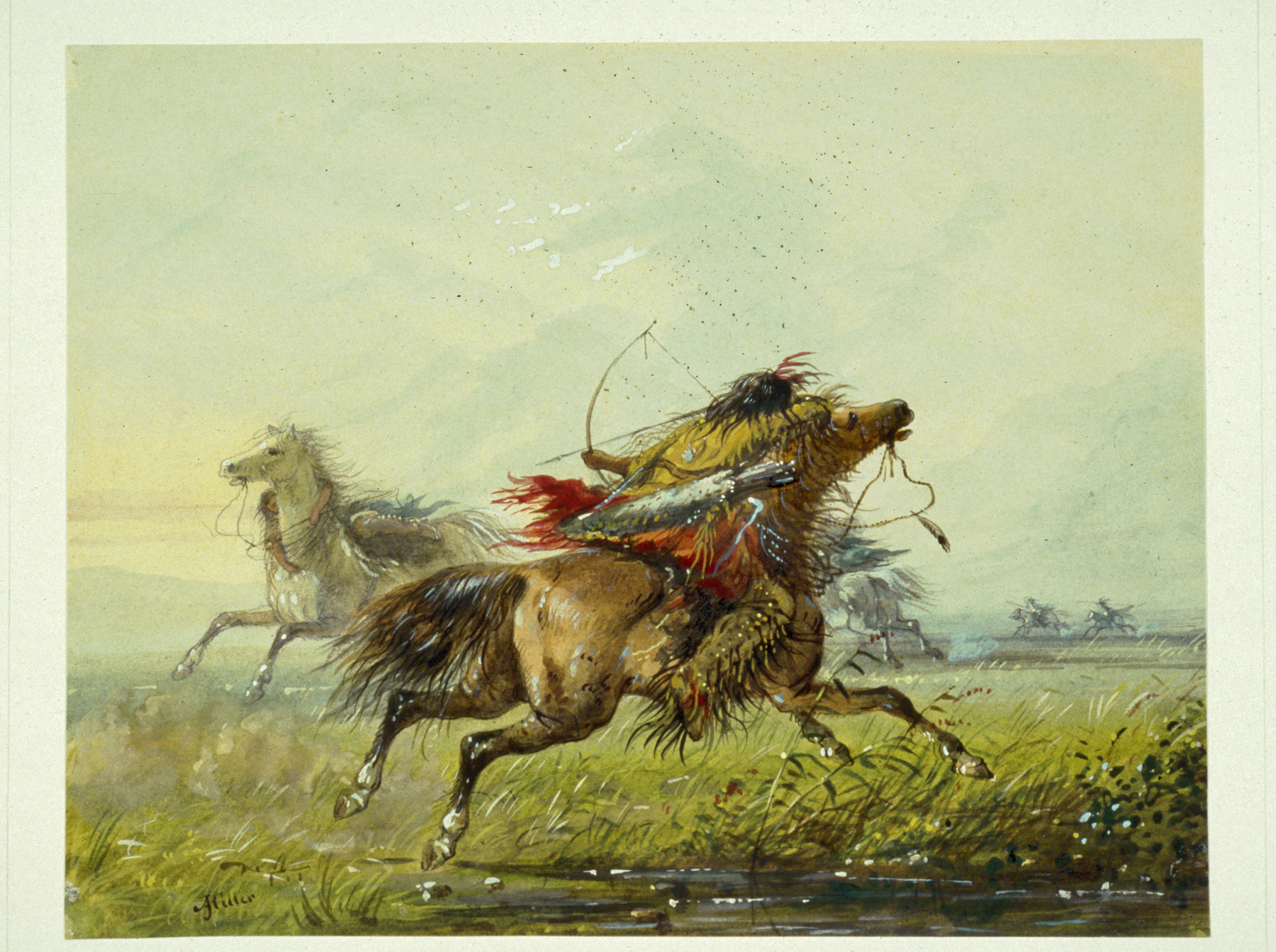Dodging an Arrow (Crow)
(18th and 19th Centuries )
Extracts from Alfred Jacob Miller’s original text, which accompanied his images of Native Americans, are included below for reference. These words, which shaped how Miller’s contemporaries viewed the watercolors, reveal the racism and sexism embedded in 19th-century exploration and colonization of the western part of what is today the United States.
"Although an Indian's life is tolerably worthless to any but himself, yet he uses every stratagem, fair and foul, to preserve it, and is often indebted to his litheness and activity for this result. The duello would by no means suit him. In battle (if on foot) he chooses his ground, so that he may retreat behind trees, rocks &c. in case of emergency. In skirmishing on horseback, he makes a target of his horse, watching the deadly arrow of his adversary;- he quick as lightning clings to his horse's neck;- dropping his body to the opposite side, exposing but a part of his arm and leg to his enemy,- sometimes he holds on simply by the heel, while the horse is in full motion. In such an attitude he will discharge his arrows under the horse's neck, recovering his seat in a moment;- this is only attained by long practice,- a broken neck certanly awaits any one who tries to accomplish the feat for the first time." A.J. Miller, extracted from "The West of Alfred Jacob Miller" (1837).
In July 1858 William T. Walters commissioned 200 watercolors at twelve dollars apiece from Baltimore born artist Alfred Jacob Miller. These paintings were each accompanied by a descriptive text, and were delivered in installments over the next twenty-one months and ultimately were bound in three albums. Transcriptions of field-sketches drawn during the 1837 expedition that Miller had undertaken to the annual fur-trader's rendezvous in the Green River Valley (in what is now western Wyoming), these watercolors are a unique record of the closing years of the western fur trade.
Inscription
Provenance
Provenance (from the French provenir, 'to come from/forth') is the chronology of the ownership, custody, or location of a historical object. Learn more about provenance at the Walters.
William T. Walters, Baltimore, 1858-1860, by commission; Henry Walters, Baltimore, 1894, by inheritance; Walters Art Museum, 1931, by bequest.
Exhibitions
| 1988 | Alfred Jacob Miller: Maryland and the West. The Walters Art Gallery, Baltimore; Washington College, Chestertown; Frostburg State University, Frostburg; Jewish Community Center of Greater Washington, Rockville. |
| 1980-1981 | Six Guns and Tomahawks. Southern Ohio Museum and Cultural Center, Portsmouth. |
Conservation
| Date | Description | Narrative |
|---|---|---|
| 5/30/1980 | Loan Consideration | examined for loan |
| 11/1/1980 | Treatment | re-housed |
Geographies
USA (Place of Origin)
Measurements
8 15/16 x 11 15/16 in. (22.7 x 30.3 cm)
Credit Line
Commissioned by William T. Walters, 1858-1860
Location in Museum
Not on view
Accession Number
In libraries, galleries, museums, and archives, an accession number is a unique identifier assigned to each object in the collection.
In libraries, galleries, museums, and archives, an accession number is a unique identifier assigned to each object in the collection.
37.1940.134







